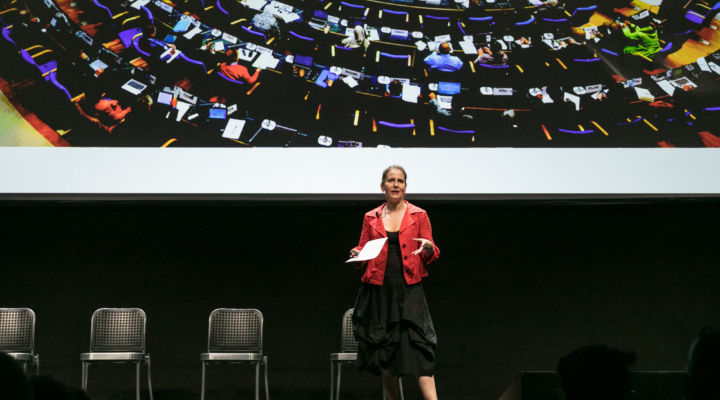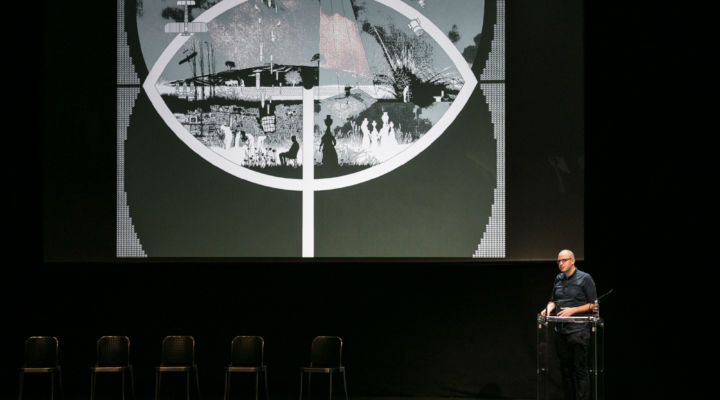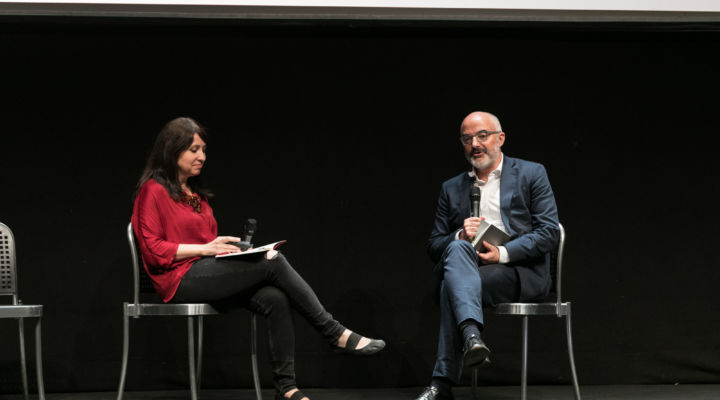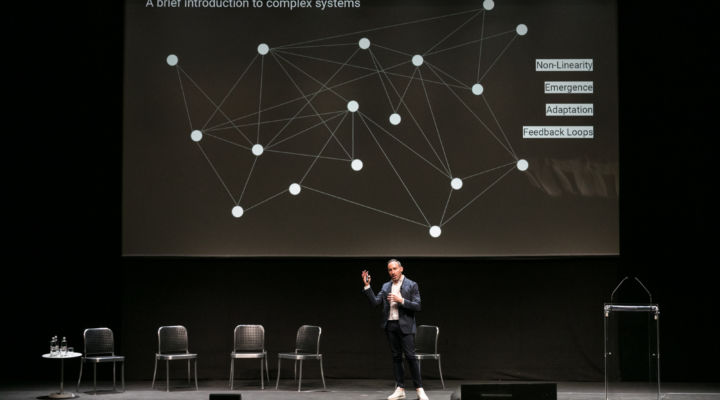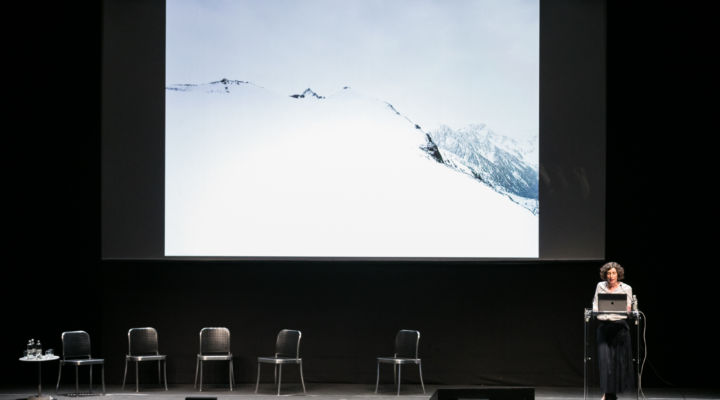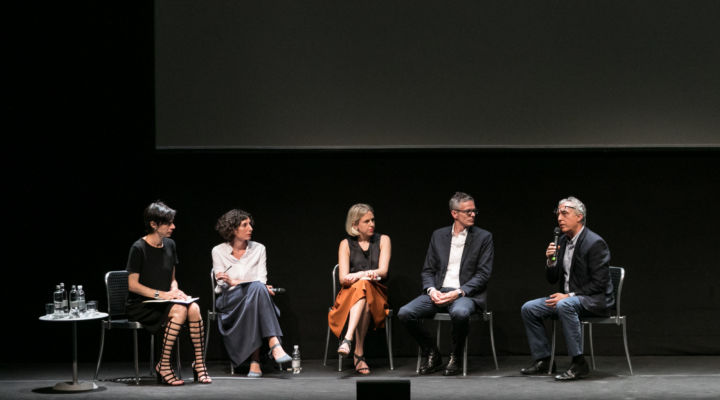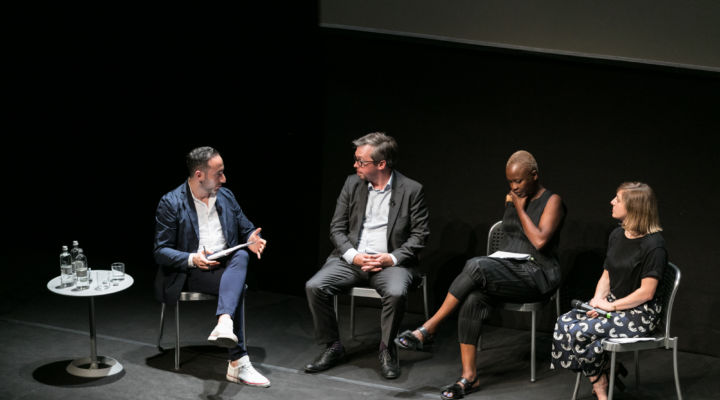
Tuesday, June 19, 2018
9:30am–6:15pm
In anticipation of the upcoming XXII Triennale, Broken Nature: Design Takes on Human Survival, Triennale di Milano hosted its first public symposium, divided in four chapters—Restorative Design, Magic Pragmatism, Complex Systems, and Long-Term Attitudes—that act as investigative angles for the exhibition. The XXII Triennale will present design approaches that encourage a multifaceted and comprehensive reading of the issues threatening our planet and our collective existence, stimulate an appreciation of the systems in which individuals live and operate, and galvanize attitudes that consider life beyond the next few generations. Gathering an international group of designers, architects, scientists, curators, and thinkers from diverse backgrounds, the symposium has offered a dynamic exchange of opinions on these issues through individual presentations, panel conversations, and video contributions.
Restorative Design
The relationship between human beings and their habitat is an intricate weaving composed of numerous strands. The pace at which negative change is happening––in other words, the pace at which natural resources are being depleted, displacement is occurring, ocean levels are rising, urban populations are growing, and xenophobic sentiments are spreading, to name just a few virulent developments—suggests that some of these bonds might be broken beyond repair, while others, although frayed, remain in place. In order to restore the ones that still have hope of survival and rebuild some of those that have been lost, humans must move to make reparations. What strategies can designers, architects, artists, and scientists propose in order to make tangible amends to the world humans inhabit and mold?
Magic Pragmatism
In a world that is at once increasingly jumpy, unstable, and lethargic, creative endeavors are a testimony to the revolutionary potential of imagination. In fact, designers, artists, and architects operating in a favorable space as mediators between theory and practice can be active participants in the reorganization of established systems. By revealing radically new possibilities, and therefore proposing alternative ways of living and existing on the planet, their visions can inspire positive change in people and move them to take a critical stance on their shared experience, and to work toward better conditions for all. How does design embrace utopian ideals as a guiding force to transform the world, and at the same time commit to materializing such principles into being, without lingering in speculations or getting trapped in naïve optimism?
Complex Systems
In evaluating distinctions between humans and nature, discourses around the Anthropocene tend to flatten humanity into one single entity, and often risk obscuring the disparities and injustices that individuals and societies across the globe suffer from. The reality is that resource depletion, ecological degradation, and technological advancements do not affect people equally. Artificial Intelligence reveals deeply rooted social, racial, and economic biases; warming oceans are wiping out maritime resources on which native populations—human or otherwise—depend; and water is used to exert pressure on besieged populations in areas of conflict, to name just three examples. Yet, a rising trend to isolate global challenges and immunize—through indifference or orchestrated denial—oneself and one’s community from all that is not immediately visible reigns. What tools are available to weave a more nuanced and interconnected understanding of the world? How does one achieve such complexity and fullness without risking assimilation of the personal and the specific?
Long-Term Attitudes
Present actions—sometimes informed by previous attitudes—carry in them important intergenerational repercussions. Despite noble intentions toward other humans and animals, plants, and places, people are still—as individuals and within communities—tracking a course of destruction through overconsumption and disregard for countless forms of life, including their own. Such rapidly forming patterns pose serious tensions with ecological as well as sociopolitical processes that are inherently slower and more gradual. Beyond anxious accounts of a dystopian future, can design serve to readjust human rhythms into better alignment with long-term environmental considerations? At a time when many species are going extinct while other organisms trapped in ice sheets and permafrost for centuries may make their comeback, how long do national borders last? And what is the duration of smell? How does one adopt a harmonious understanding of such different yet coexisting temporalities in order to attempt survival?
The event was followed by a screening of Fabrizio Terranova’s documentary Donna Haraway: Storytelling for Earthly Survival (2016).
Synopsis: Donna Haraway is a prominent scholar in the field of science and technology, a feminist, and a science-fiction enthusiast who works at building a bridge between science and fiction. She became known in the 1980s through her work on gender, identity, and technology, which broke with the prevailing trends and opened the door to a frank and cheerful trans species feminism. Haraway is a gifted storyteller who paints a rebellious and hopeful universe teeming with critters and trans species, in an era of disasters. Brussels filmmaker Fabrizio Terranova visited Donna Haraway at her home in California, living with her – almost literally, for a few weeks, and there produced a quirky film portrait. Terranova allowed Haraway to speak in her own environment, using attractive staging that emphasised the playful, cerebral sensitivity of the scientist. The result is a rare, candid, intellectual portrait of a highly original thinker.





